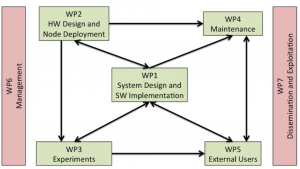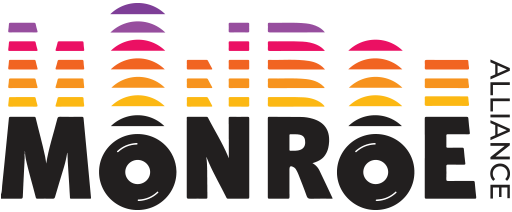
WP1: System Design and Software Implementation
How to design the building blocks of the MONROE system and its subsequent implementation is at the centre of the Work Package 1 (WP). We will be building the system taking use cases into consideration. The implementation includes all of the system’s software components; i.e. user access, experiment scheduling, measurement and visualisation.
The implementation will be done in two phases. First, we will design a prototype with basic functionality. After running some experiments, the experimenters will provide their feedback on its functionalities. Based on this, the implementation with extensions and modifications will be finalised in the second phase.
As the node capabilities are defined in WP2, this gives us with the necessary information for system design and its implementation. The MONROE system will be further supported with the use cases in WP3, maintenance routines in WP4 and external users feedback in WP5.
WP2: Hardware Design and Node Deployment
This second Work Package involves all hardware-related activities. We will start with the design and test on the MONROE node. Once all its components are ordered and assembled, the nodes will be deployed in 4 countries. Robust node recovery methods and replacement procedures will be designed and implemented. This will avoid from losing connection with the nodes.
The MONROE nodes and their deployment will be done on the basis of the use cases defined in WP1.
WP3: Experiments
Based on the use cases in WP1, we will design and execute the experiments in WP3. Our focus is on three main areas:
- performance assessment of MBB networks
- service-oriented measurement and estimation of QoE
- examination and evaluation of innovative protocols and services for MBB networks including multi-link connectivity
We will design and execute these experiments on selected use cases. The external users will then receive all collected information (scripts, sample results, tools to analyse these results and user guide) as Experiments as a Service (EaaS).
System design, software capabilities and use cases defined in WP1 and node capabilities defined in WP2 will affect applicable use cases and experiments.
WP4: Maintenance
All maintenance activities connected to MONROE nodes and MONROE system will be gathered in WP4. The focus will be on keeping as many MONROE nodes as possible up and running. We will first define the maintenance routines. Next, we will run the maintenance activities; including the nodes, the backend system and the data produced during the experiments.
System design and implementation in WP1, node design in WP2 and the external users usage of the platform in WP5 will all affect the maintenance activities.
WP5: External Users
Based on the requirements specified in WP5, we will select and support network’s external users. It will be done through open calls with two phases. In the first phase, the external users will be involved in the system design and implementation. They will provide feedback on their experience and requirements. The second phase users will have access to a more mature system; however, they will not be able to influence the system implementation.
System design and software capabilities defined in WP1, node capabilities defined in WP2 and the maintenance activities run in WP4 will all affect the external users and the experiments they will run on the platform.
WP6: Management
WP6 is responsible for overall project plan. This includes the following:
- creating the necessary communication infrastructure
- consolidating the project documentation
- streamlining the communication with the European Commission as well as among the consortium
- monitor the work progress on the basis of quality assurance
- risk management including problem and contingency handling
- manage the progress and financial reporting for the project
WP7: Dissemination and Exploitation
WP7 covers all the dissemination and exploitation activities. We would like to establish MONROE as the European benchmark platform for MBB measurements and testbed activities. To efficiently coordinate and execute dissemination activities, we will create and select the best tools and guidelines for a unique project brand. This will apply to web sites, forums, selected social media, policy makers, relevant European technical press, etc. Additionally, the experimental results will be open to public (OPEN DATA). Furthermore, the consortium is planning to participate in FIRE+ and other international events to showcase FIRE and MONROE. Finally, MONROE will develop viable funding and business models. We would like to grow the platform to be present in more countries and on more sites. Thus it can sustain the impact of project end and continue independently after.
